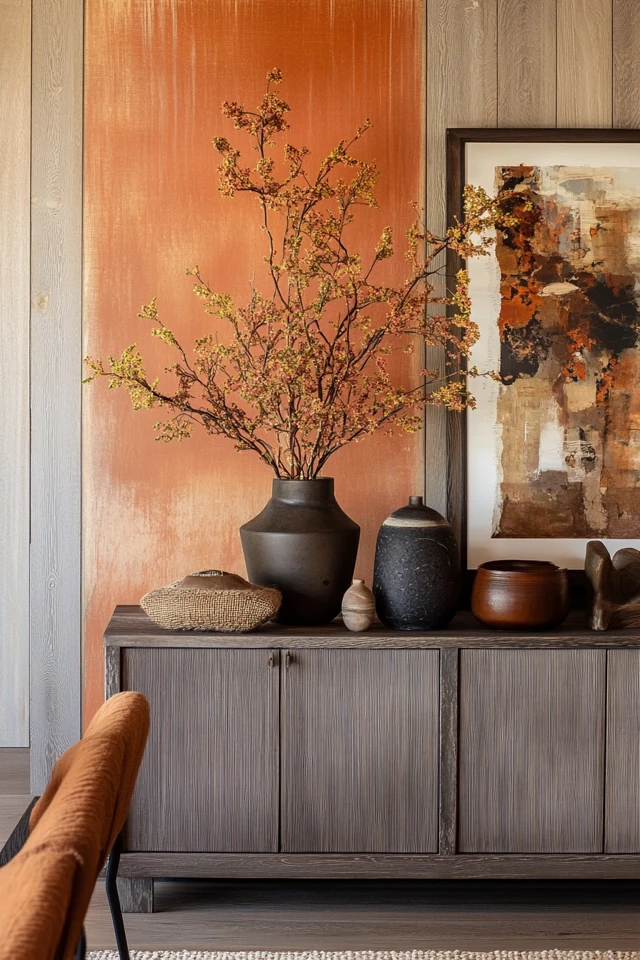Layering textures is one of the easiest ways to create depth, warmth, and personality in your home. Whether you’re styling a cozy living room or a serene bedroom, mixing textures can take your space from flat to fabulous.
When I first started experimenting with textures in my own home, I stuck to basics like adding a fluffy throw to my sofa. But once I began layering materials like wood, metal, and linen, the entire room felt more sophisticated and inviting. That’s when I realized texture isn’t just about comfort—it’s about balance and storytelling.
In this guide, I’ll share the best tricks for layering textures in your room, so you can create a visually rich space that feels as good as it looks.
Why Is Texture Important in Interior Design?
Texture adds visual interest, warmth, and dimension to a room. It helps balance stark, flat surfaces and creates a tactile experience that makes the space feel complete. By mixing materials, patterns, and finishes, you can craft a dynamic and cohesive look.
1. Start with a Neutral Base
Why It Works
A neutral base provides a clean, versatile foundation for layering textures without overwhelming the space.
How to Do It
- Use neutral-colored walls, rugs, or large furniture pieces like a sofa.
- Incorporate subtle textures in base elements, like a linen-upholstered chair or a jute rug.
- Build on this base with contrasting textures and accents.
Example:
A cream-colored linen sofa paired with a natural jute rug sets the stage for layered textures.
2. Combine Different Materials
Why It Works
Mixing materials like wood, metal, and glass adds variety and prevents the room from feeling one-dimensional.
How to Do It
- Pair soft materials like wool or velvet with hard surfaces like stone or wood.
- Mix sleek metals like brass or chrome with organic materials like rattan or bamboo.
- Balance natural materials with polished finishes for contrast.
Example:
A wooden coffee table topped with a glass vase and a wool throw combines three distinct textures.
Picture Gallery
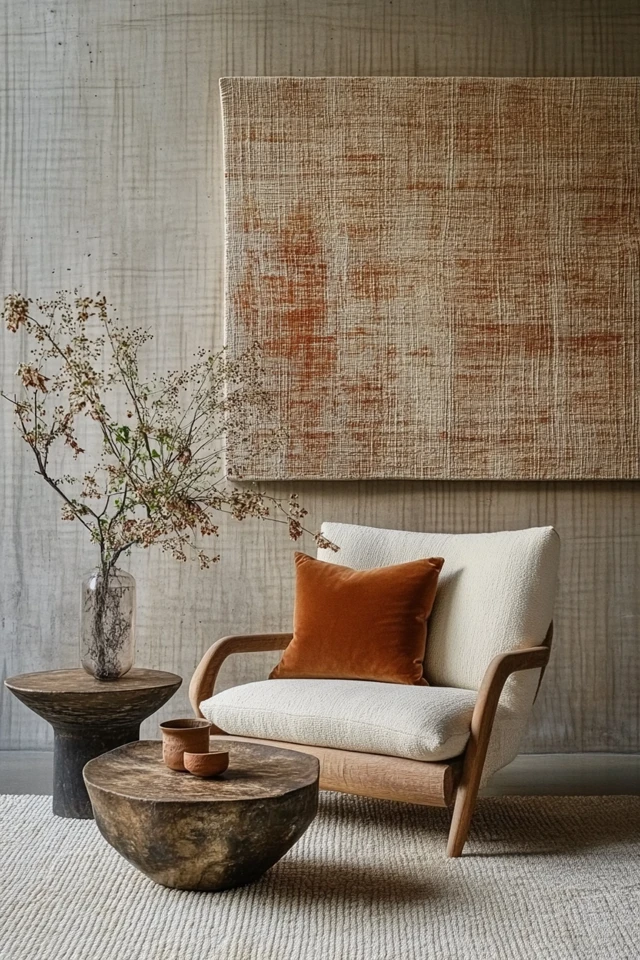
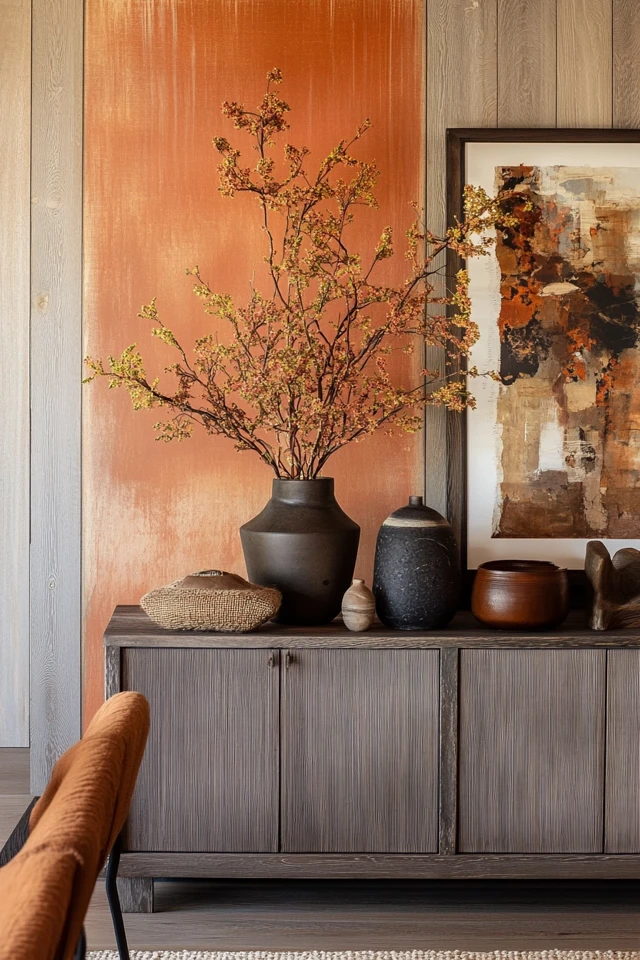
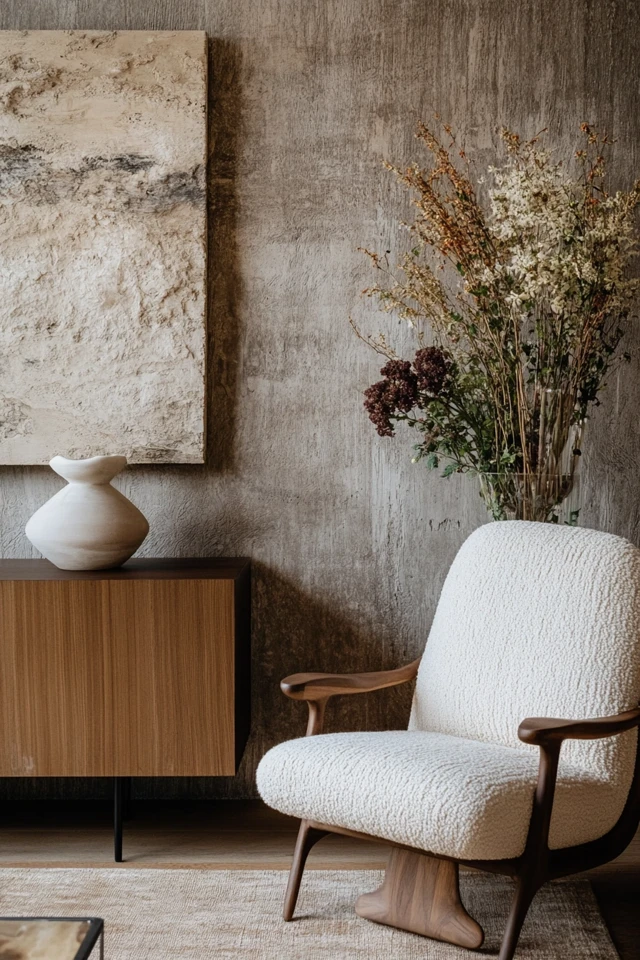
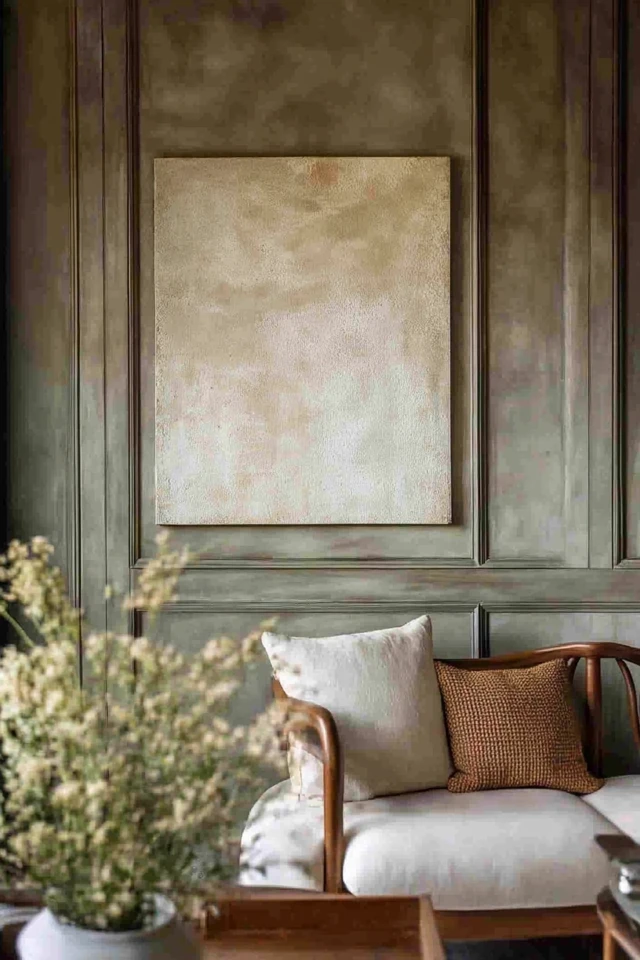

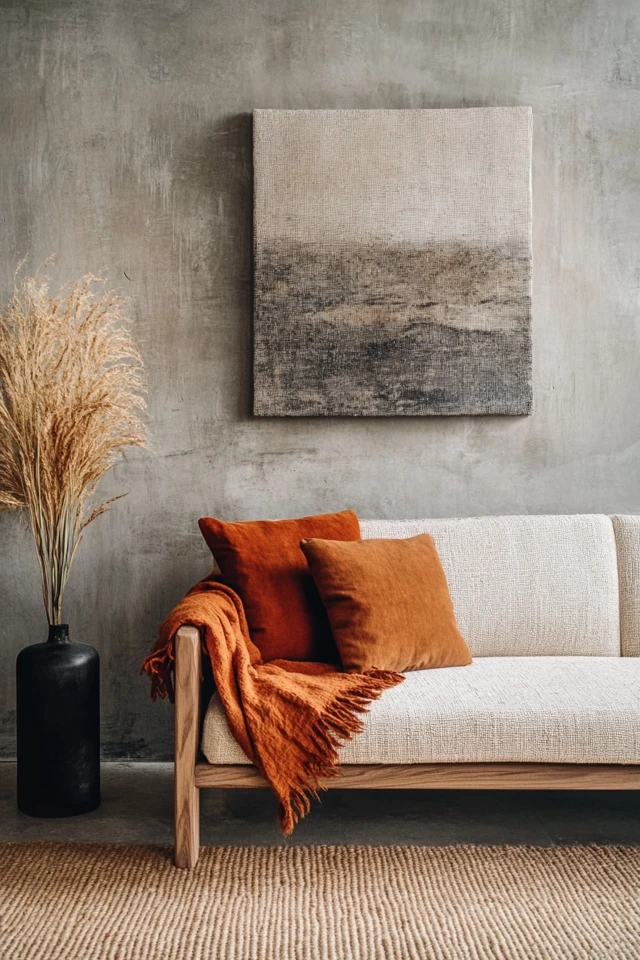
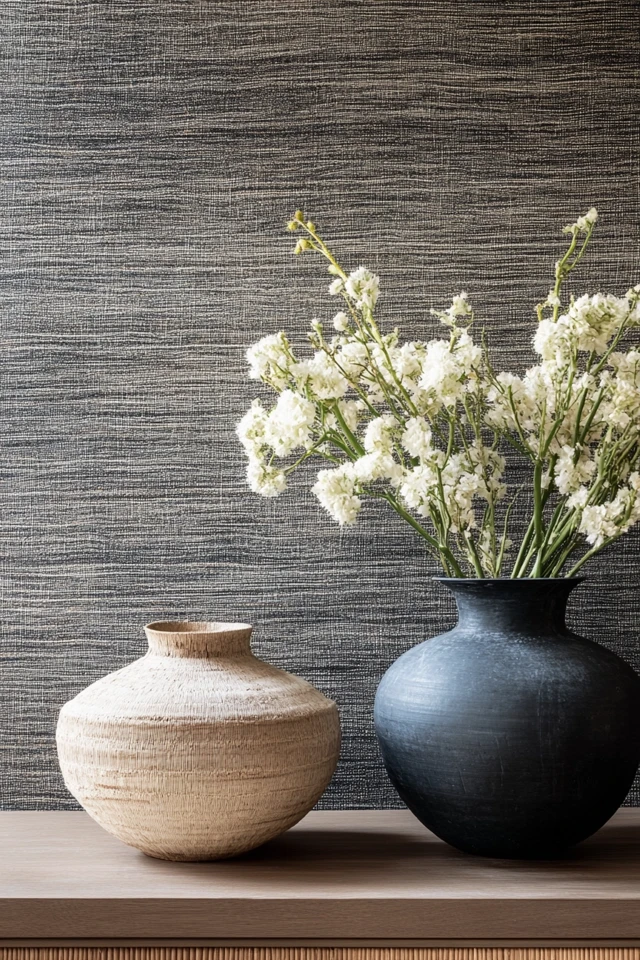
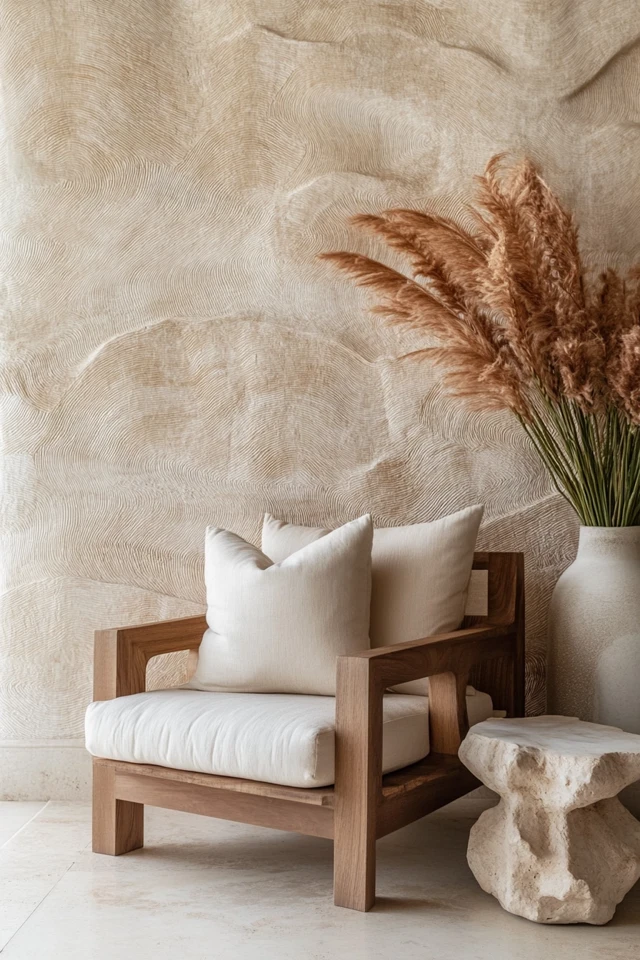
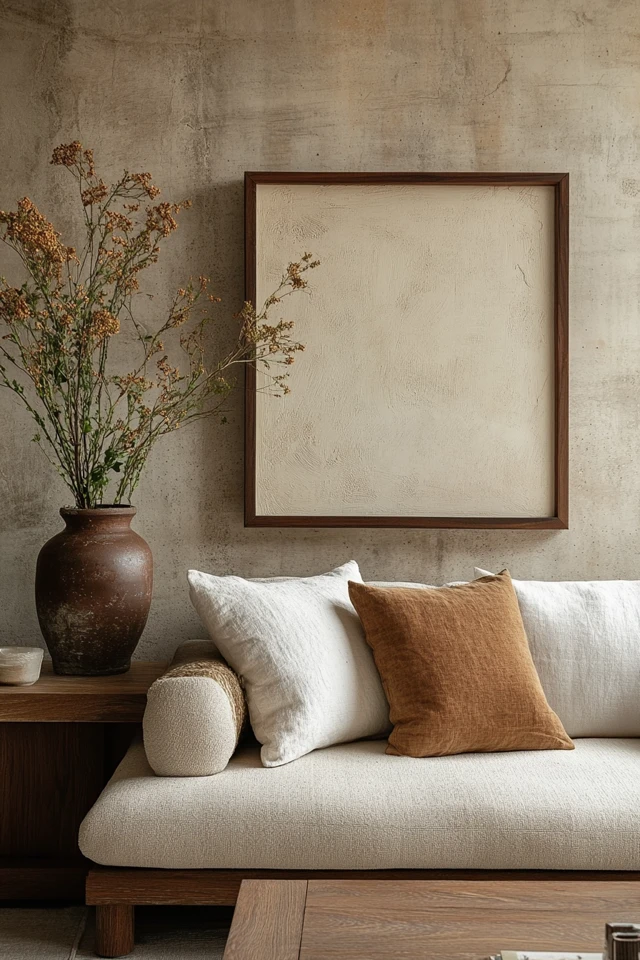
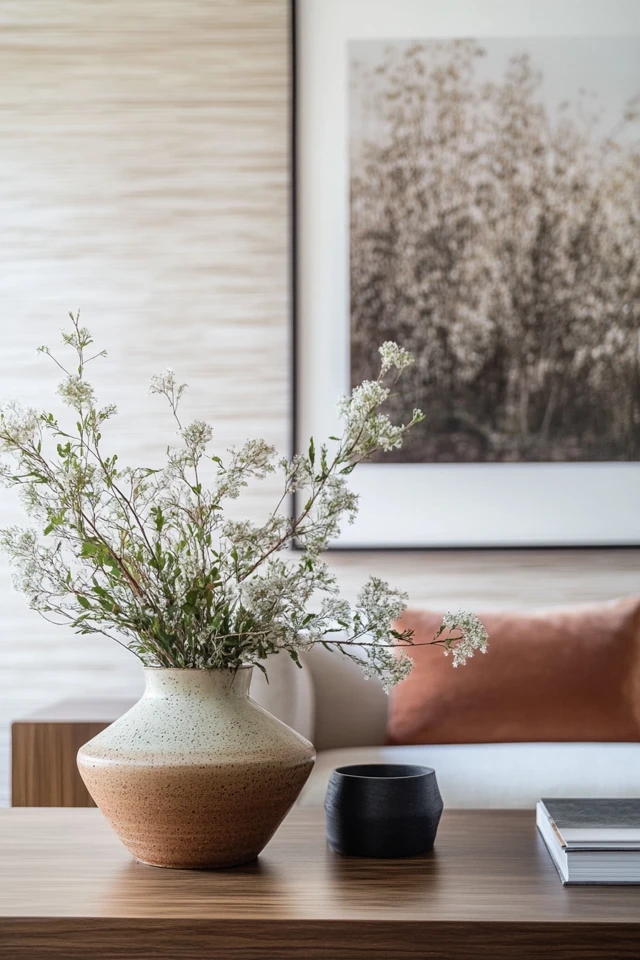
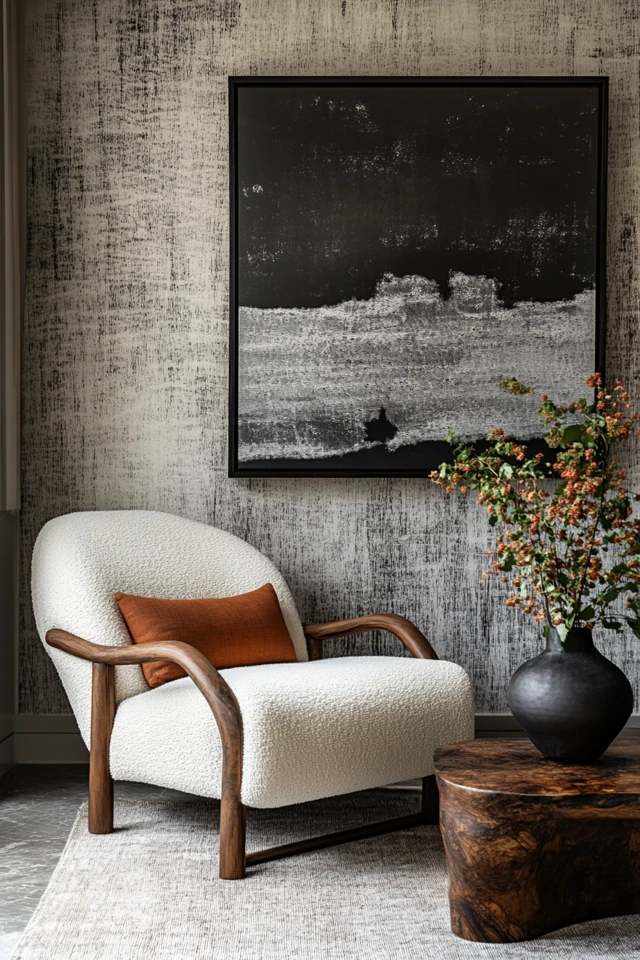
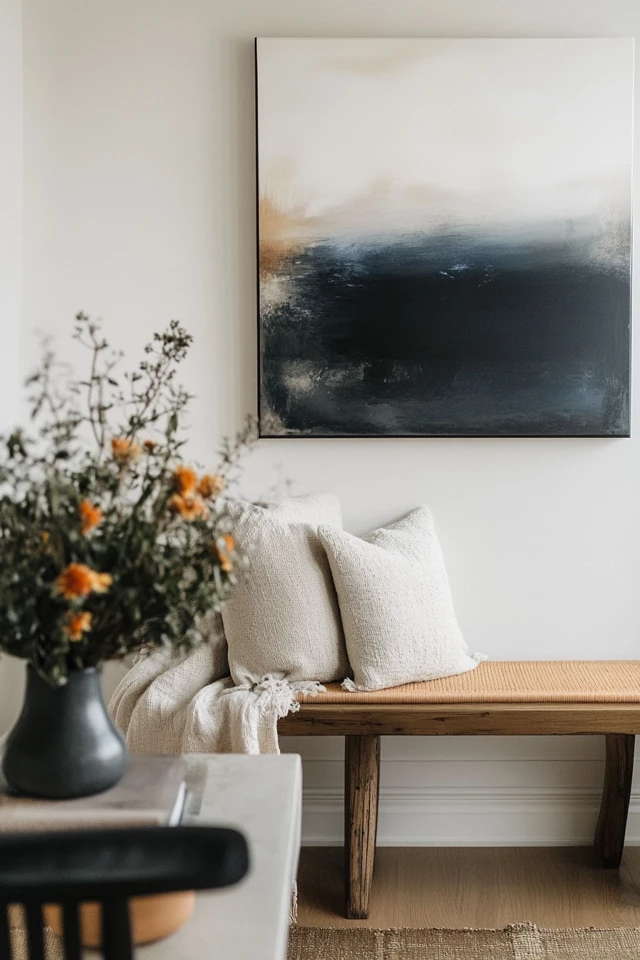
3. Layer Rugs
Why It Works
Layering rugs adds coziness and dimension while allowing you to play with patterns and textures.
How to Do It
- Start with a large, flat-weave or natural-fiber rug as the base.
- Add a smaller, plush or patterned rug on top for contrast.
- Use complementary colors to tie the look together.
Styling Tip:
A jute rug layered with a soft, patterned wool rug creates a visually appealing foundation for any room.
4. Play with Patterns
Why It Works
Patterns add complexity and energy to your design while enhancing texture.
How to Do It
- Mix large-scale patterns with smaller, subtler ones to avoid visual chaos.
- Use patterned cushions, throws, or curtains to introduce texture without taking up too much space.
- Pair geometric prints with organic ones, like florals or stripes.
Example:
A striped cushion paired with a floral throw creates a balanced yet lively look on a neutral sofa.
5. Incorporate Natural Elements
Why It Works
Natural materials like wood, stone, and plants bring warmth and authenticity to your design.
How to Do It
- Add a wooden tray or rattan basket for subtle texture.
- Use stone accents, like coasters or a planter, for a raw, earthy feel.
- Include plants with varied leaf shapes to introduce a living texture.
Styling Tip:
A terracotta pot with a leafy plant complements soft textiles while adding a natural element to the room.
6. Use Textured Wall Finishes
Why It Works
Walls often take up the most visual space, so adding texture here makes an impactful statement.
How to Do It
- Opt for textured wallpaper, like grasscloth or embossed patterns.
- Add wood paneling or shiplap for a cozy, Scandinavian-inspired look.
- Use limewash or plaster finishes for an organic, old-world texture.
Example:
A soft gray limewash wall paired with smooth white furniture creates a stunning contrast.
7. Mix Soft and Hard Textures
Why It Works
Balancing soft and hard materials ensures your room feels neither too cold nor overly cozy.
How to Do It
- Pair a soft wool blanket with a sleek leather sofa.
- Mix a glass coffee table with velvet cushions and a woven basket.
- Use hard surfaces like stone or metal alongside soft rugs or curtains.
Styling Tip:
A velvet armchair next to a black metal side table strikes the perfect texture balance.
8. Layer Cushions and Throws
Why It Works
Layering cushions and throws is one of the simplest ways to add texture, color, and comfort.
How to Do It
- Use cushions in a mix of fabrics like cotton, velvet, and faux fur.
- Layer a chunky knit throw over a smooth linen blanket for added depth.
- Stick to a cohesive color palette but vary the textures.
Example:
A bed with crisp cotton sheets, a velvet duvet, and a cable-knit throw exudes cozy elegance.
9. Add Texture with Lighting
Why It Works
Lighting can introduce unexpected textures through materials like fabric shades, metal finishes, or woven pendants.
How to Do It
- Use a rattan or wicker pendant light for a natural, textured look.
- Add a table lamp with a fabric shade to soften the room.
- Choose metal or glass fixtures for a sleek, modern touch.
Styling Tip:
A woven rattan pendant light above a wooden dining table adds texture while tying in natural materials.
10. Focus on Small Details
Why It Works
Small decor items, like trays, vases, and books, can add layers of texture without overwhelming the space.
How to Do It
- Choose vases with ribbed or matte finishes for tactile appeal.
- Use textured trays to organize items on coffee tables or countertops.
- Layer decor, like books and candles, on different materials (e.g., wood and glass).
Example:
A stack of books topped with a ceramic candle holder on a wooden tray creates a layered vignette.
How to Keep Your Textures Balanced
- Limit the Palette: Stick to a consistent color scheme to unify your textures.
- Vary the Scale: Mix large, bold textures with smaller, subtler ones to avoid visual clutter.
- Don’t Overdo It: Focus on a few key areas—like your sofa or coffee table—rather than texturing every surface.
- Use Negative Space: Leave some areas smooth or unadorned to let textured elements shine.
- Experiment Gradually: Add one or two textures at a time to see what works before committing.
Conclusion
Layering textures is an art, but it doesn’t have to be complicated. By combining materials, adding soft textiles, and focusing on balance, you can create a room that feels visually rich and incredibly inviting.
When I started layering textures in my own home, the transformation was immediate. My once-flat living room now feels dynamic and cozy, with every element contributing to the overall warmth and style of the space.
So, embrace these tips, experiment with textures, and watch your room come to life with depth, personality, and charm.
FAQ
Why is texture important in interior design?
Texture adds depth, warmth, and visual interest, helping to balance and complete the overall design of a room.
What are some easy ways to add texture to a room?
Use rugs, cushions, throws, natural materials like wood and stone, and textured decor like vases or trays.
Can I mix patterns and textures together?
Yes! Just keep the color palette cohesive and balance larger patterns with smaller, more subtle ones.
What materials work best for layering textures?
Natural materials like wool, linen, wood, metal, and stone are excellent for creating varied, tactile layers.
How do I keep my room from looking too busy with textures?
Limit your color palette, vary the scale of textures, and leave some areas smooth to avoid overwhelming the space.

